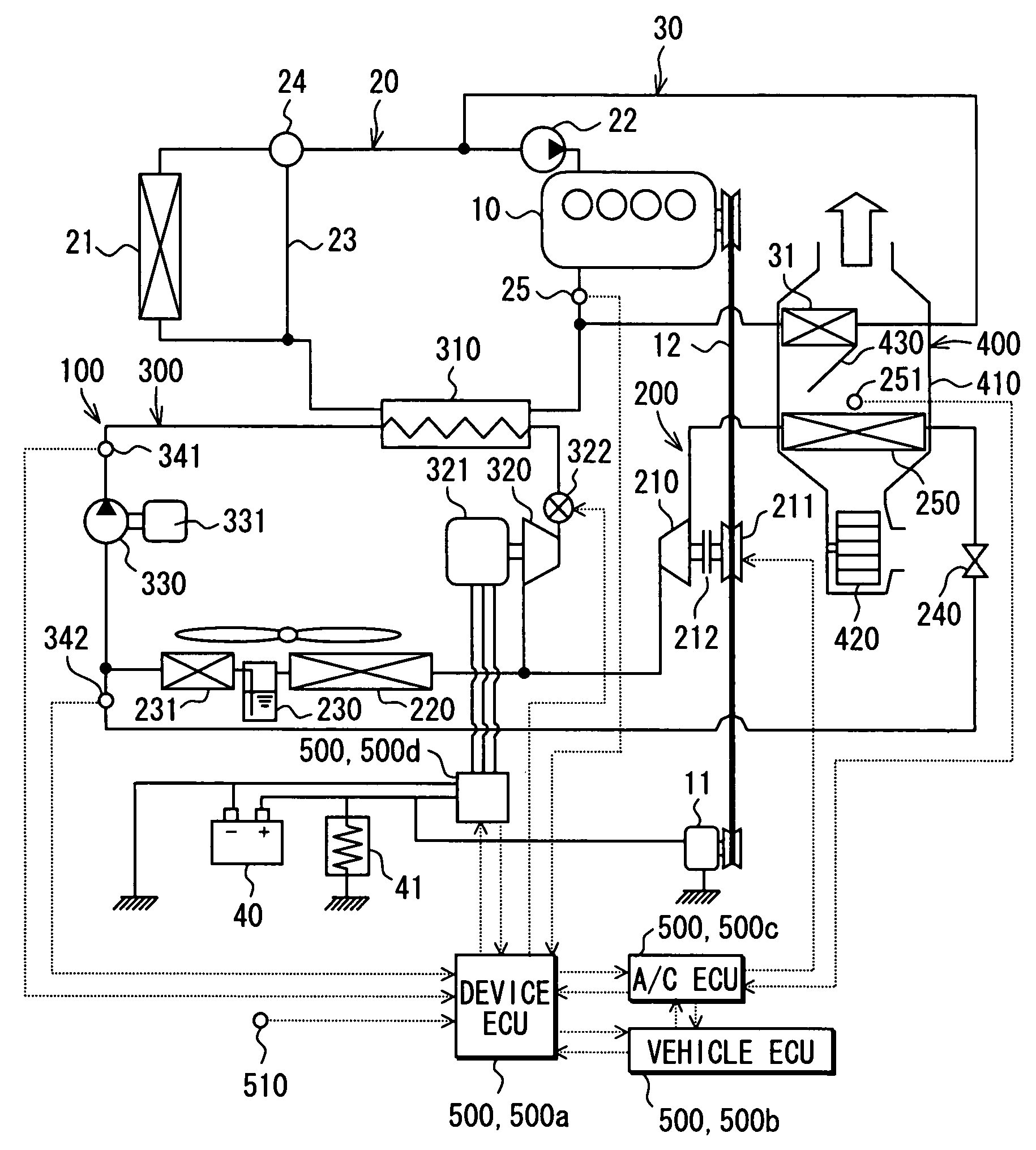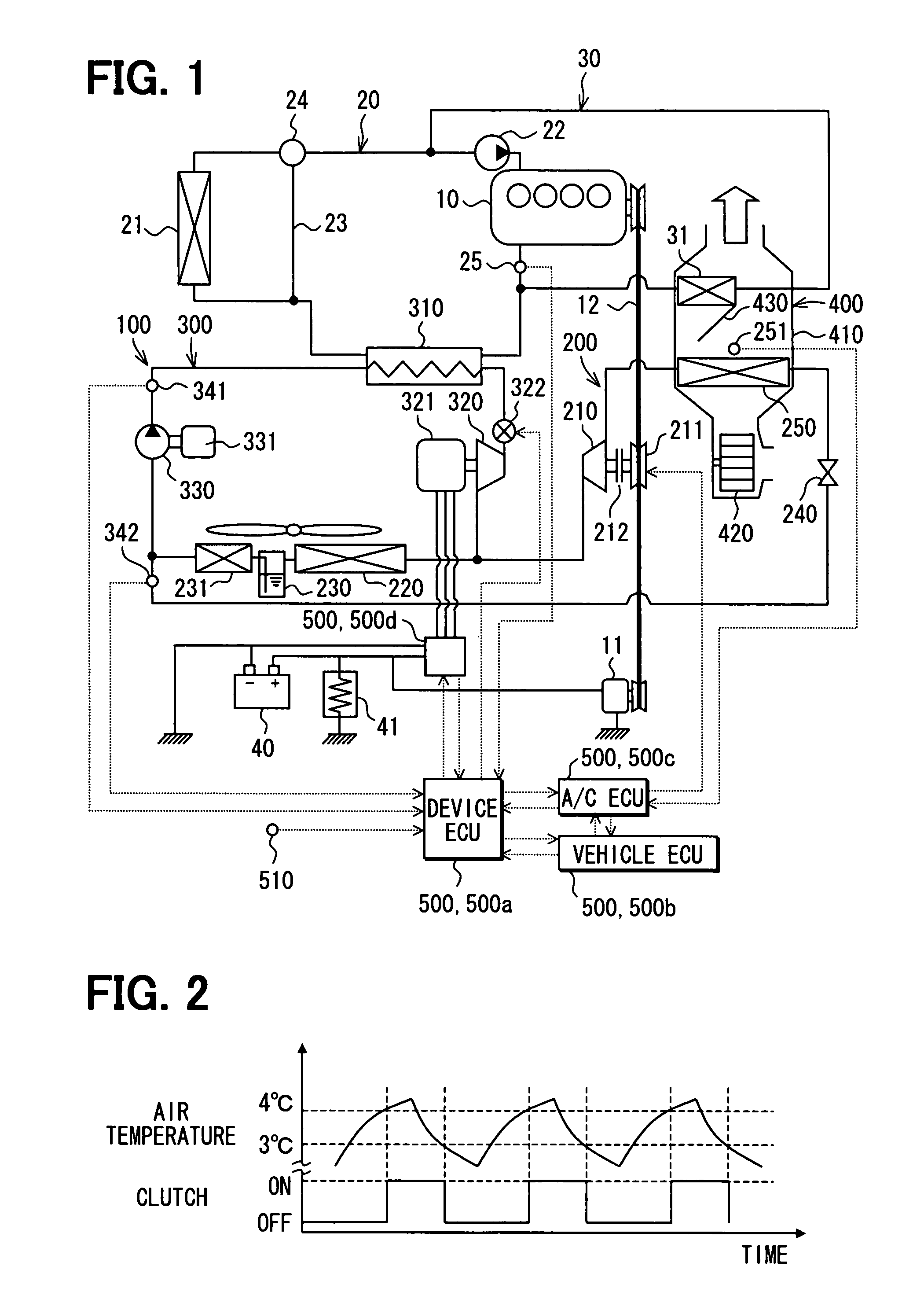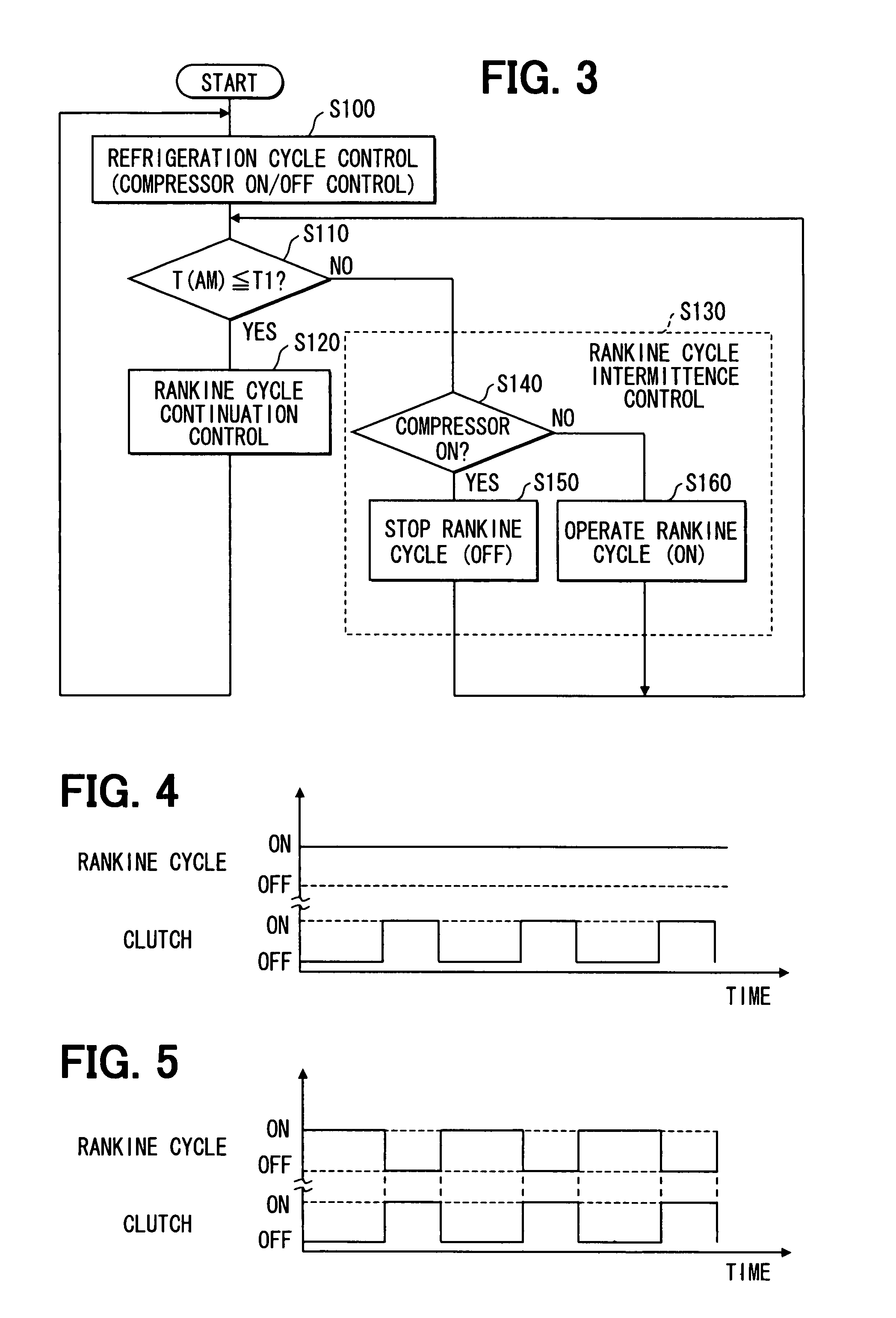Waste heat utilization device and control method thereof
a technology of waste heat and waste heat, which is applied in the direction of machines/engines, lighting and heating apparatus, machine operation modes, etc., can solve the problems of deteriorating the fuel consumption efficiency of the engine, energy loss in the whole cycle of waste heat,
- Summary
- Abstract
- Description
- Claims
- Application Information
AI Technical Summary
Benefits of technology
Problems solved by technology
Method used
Image
Examples
first embodiment
[0035]A first embodiment of the present invention will be now described with reference to FIGS. 1 to 5. In this embodiment, a waste heat utilization device 100 (cycle system) is typically used for a vehicle using an internal combustion engine 10 as a vehicle driving source. The waste heat utilization device 100 is constructed with a refrigeration cycle 200, a Rankine cycle 300 having a generator 321, and a control unit 500 (500a, 500b, 500c, 500d) for controlling operation of the refrigeration cycle 200 and the Rankine cycle 300. A part of components of the refrigeration cycle 200 is used in common with the Rankine cycle 300.
[0036]The engine 10 is a water-cooled internal combustion engine, and is an example of a heat generating unit in this embodiment. As shown in FIG. 1, a radiator circuit 20 and a heater circuit 30 are provided for the engine 10. The Engine 10 is cooled by engine-cooling water circulating in the radiator circuit 20, and air-conditioning air is heated using the eng...
second embodiment
[0081]A second embodiment of the present invention will be now described with reference to FIGS. 6 to 10. In a waste heat utilization device 100 of the second embodiment, a variable displacement compressor 210A is used instead of the fixed displacement compressor 210, as compared with the first embodiment. That is, the variable displacement compressor 210A changes a slant angle of its slant plate so as to adjust its discharge capacity per rotation. Therefore, in the second embodiment, the electromagnetic clutch 212 of the above-described first embodiment is omitted. Thus, a control method for controlling the compressor 210A in the combination operation of the refrigeration cycle 200 and the Rankine cycle 300 is different from that of the above-described first embodiment.
[0082]The compressor 210A has a variable discharge capacity that is changeable continuously from 0% to 100% when a maximum discharge capacity to be dischargeable is 100%. When the discharge capacity of the compressor...
third embodiment
[0093]In the above-described first and second embodiments, the cooling load is determined based on the outside air temperature T(AM). In the third embodiment, the cooling load is determined by combining information used for the control of the engine 10 and information used for the control of the refrigeration cycle 200.
[0094]The vehicle speed can be used for the control information of the engine 10. Generally, as the vehicle speed increases, the wind air flowing into the condenser 220 is increased so as to facilitate heat exchange with the refrigerant. Therefore, as the vehicle speed increases, the cooling load of the refrigeration cycle 200 becomes smaller.
[0095]Furthermore, as the control information of the refrigeration cycle 200, a solar radiation amount T(S) entering into the passenger compartment, an actual inside temperature T(IN) of the passenger compartment and a set temperature T(SET) can be used in addition to the outside air temperature T(AM). The cooling load is changed...
PUM
 Login to View More
Login to View More Abstract
Description
Claims
Application Information
 Login to View More
Login to View More - R&D
- Intellectual Property
- Life Sciences
- Materials
- Tech Scout
- Unparalleled Data Quality
- Higher Quality Content
- 60% Fewer Hallucinations
Browse by: Latest US Patents, China's latest patents, Technical Efficacy Thesaurus, Application Domain, Technology Topic, Popular Technical Reports.
© 2025 PatSnap. All rights reserved.Legal|Privacy policy|Modern Slavery Act Transparency Statement|Sitemap|About US| Contact US: help@patsnap.com



